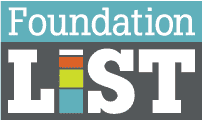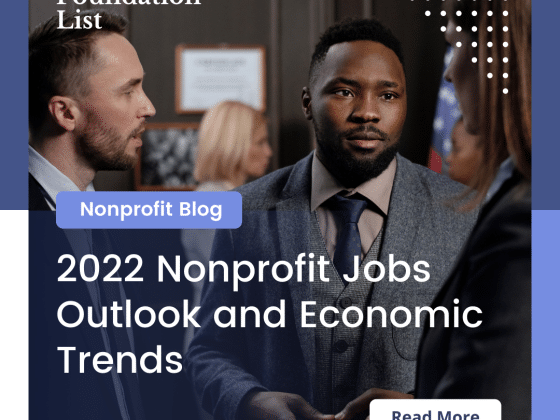A Critical Look at Nonprofit Funding Trends in 2025
As 2025 unfolds, nonprofit organizations are navigating a complex and rapidly evolving financial landscape shaped by rising tariffs, global trade uncertainty, and reductions in federal funding for essential programs. These shifting dynamics are raising urgent questions about long-term sustainability, strategic resource allocation, and workforce stability across the sector.
At the same time, this environment presents a unique moment for transformation. With growing public concern, increased donor engagement, and proactive investments from state and local governments, nonprofits have new opportunities to lead with purpose, innovation, and collaboration. Organizations that respond with agility and vision can position themselves to not only sustain operations but to grow their impact in new and meaningful ways.
This article explores how nonprofits can adapt to the current economic climate, activate donor interest, and align with emerging funding channels to build a more resilient and opportunity-focused future.
Turning Headwinds Into New Paths
In today’s economic environment, the nonprofit sector is feeling the effects of shifting federal priorities, international trade adjustments, and policy realignments. The convergence of rising costs and diminished federal support is reshaping how many organizations plan, fund, and deliver their work.
Still, disruption often clears the way for new approaches. Nonprofits have historically shown remarkable resilience and creativity during periods of economic instability. What lies ahead is not just a challenge to be managed but a call to evolve.
Across the country, organizations are already adapting, forming new partnerships, engaging donors with renewed urgency, and embracing digital tools to reach broader audiences. The current moment calls for bold strategies that lean into collaboration, reimagine service models, and connect deeply with the values driving philanthropic support today.
This report outlines actionable insights into how the sector can move forward through uncertainty and emerge stronger, more agile, and more connected to the evolving needs of communities.
What Are Tariffs and Why Do They Matter to Nonprofits?
Tariffs are taxes imposed by a government on imported goods. Intended to protect domestic industries and level the playing field, tariffs often result in increased prices for imported products. When tariffs go up, the cost of doing business—whether you’re a manufacturer, a healthcare provider, or a nonprofit–can rise with them.
At first glance, it might seem that nonprofits are removed from global trade policy. But the reality is that tariffs ripple through the economy in ways that affect philanthropic giving, operational costs, and demand for services. For instance:
-
Higher costs for goods (technology, office equipment, vehicles, even food) increase overhead
-
Decreased discretionary income among households and corporations can reduce donations and sponsorships
-
Volatile supply chains and vendor pricing changes impact everything from capital campaigns to program delivery
If a community food bank sees prices rise for imported agricultural equipment, or a medical nonprofit faces surging prices on imported diagnostic tools, the impacts are very real and immediate.
The Federal Funding Shift – What’s Happening?
Alongside trade changes, federal budget policy is tilting toward contraction in several key areas. Discretionary funding, often a core source of nonprofit grant revenue, is increasingly scrutinized or reduced. Budget proposals in 2024 and 2025 reflect a pullback in domestic programs tied to housing, education, workforce development, and public health.
This trend is compounded by:
-
Agency downsizing and consolidation (for example HUD, EPA, HHS, DOE)
-
Longer delays in grant disbursements due to administrative backlog
-
A heavier shift of burden to state and local governments, many of which are already under fiscal pressure
The effect is a nonprofit sector facing uncertainty, particularly for organizations that rely on federal funds to support housing assistance, afterschool programs, job training, or mental health services. According to the National Council of Nonprofits, approximately one-third of U.S. nonprofits receive some form of government support, making these shifts consequential on a national scale.
Tariffs and Federal Shifts by the Numbers – A Macro Snapshot
Let’s put some numbers around these macro trends:
-
Tariffs: Since 2018, U.S. tariffs have climbed significantly across Chinese imports, with rates ranging from 7.5% to over 25%. Policy signals indicate additional increases in 2025, potentially affecting over $300 billion in goods.
-
Federal Spending: Discretionary domestic spending is forecasted to drop by up to 8% over the next two fiscal years in real terms, with greater proportional cuts likely in housing, labor, and education categories.
While these figures vary year to year, the implications are systemic. Nonprofit budgets must account for inflationary pressure, tighter competition for grants, and shifting donor behavior. At the same time, programmatic demand often increases during economic tightening. This is a phenomenon many nonprofits remember well from the 2008 to 2011 recession period.
What This Means on the Ground for Nonprofits
For mission-driven organizations, this moment is not only one of belt-tightening but also of strategic pivoting. Some of the most pressing on-the-ground realities include:
-
Increased demand for food security, housing support, healthcare access, and mental health services
-
Delayed or reduced grant payments from federal sources, requiring stronger cash flow planning
-
Potential staff layoffs or hiring freezes, especially for organizations dependent on government reimbursements
-
Diminished access to technical resources or research partnerships, especially if federal agencies scale back collaborative programming
Moreover, federal agency closures or even the perception of instability can create a chilling effect on both institutional and individual donors who may hesitate to fund programs linked to uncertain public streams.
Weathering the Storm – Strength in Strategy and Collaboration
Despite the pressure, the nonprofit sector has a long record of resilience. This is a time not only for cost management but also for collaborative strategy.
Key adaptive strategies include:
-
Diversifying funding sources such as expanding individual giving, tapping new foundations, and cultivating corporate support
-
Building coalitions or networks to share grantwriting, operations, and infrastructure
-
Investing in workforce resilience, such as cross-training staff or upgrading internal systems that support remote or hybrid service delivery
-
Scenario planning to anticipate shortfalls and realign programs around achievable impact
During the last decade, many nonprofits have leveraged adversity to streamline operations and strengthen board leadership. These are skills that will again be crucial in today’s landscape.
Silver Linings – Emerging Opportunities for Nonprofits
While the broader tone in the funding world may be cautious, several important shifts are creating space for opportunity, and nonprofits are uniquely positioned to lead. These are not hypothetical trends. They’re real openings taking shape right now, quietly transforming how mission-driven work is funded, supported, and expanded across the United States.
Mobilizing Major Giving in a Moment of Public Concern
Periods of economic disruption and public frustration, such as the current backlash against rising tariffs and reduced federal funding, often generate a unique philanthropic energy. When individuals and businesses feel powerless at the national level, they frequently seek ways to make a tangible difference close to home. For nonprofits, this is a powerful time to build momentum, rally support, and grow major giving programs that respond directly to the urgency of the moment.
Public dissatisfaction with trade policies, supply chain instability, and the threat of agency closures has sparked a renewed civic awareness across many communities. This climate offers nonprofits a timely opportunity to turn widespread concern into meaningful engagement. Organizations that act boldly, tell compelling stories, and demonstrate immediate impact are the ones most likely to inspire giving right now.
Across the country, nonprofits are already leveraging this shift. Food insecurity organizations are running appeals tied to rising grocery prices. Education-focused nonprofits are inviting donors to help fill the gap left by federal program cuts. In both cases, the message is clear: when systems falter, communities step up. And donors respond when they feel they can help stabilize something vital.
The corporate sector is also paying close attention. Companies affected by trade uncertainty and economic pressure are actively searching for ways to align with trusted organizations that bring credibility, reach, and purpose. Nonprofits that position themselves as reliable partners in community development or workforce readiness are standing out as ideal allies. These partnerships are often multi-year in scope and open the door to event sponsorships, matching gift programs, and broader brand collaboration.
Now is also an ideal moment to revitalize major donor strategies. Hosting intentional, well-crafted events can bring new visibility to your mission and create opportunities to build deeper relationships with funders who are eager to contribute during turbulent times. Leadership roundtables, donor briefings, impact summits, and mission-focused community events offer valuable platforms to connect, educate, and inspire.
These efforts serve more than just fundraising goals. They build public awareness, media attention, and long-term credibility. When a nonprofit steps into a leadership role during a time of public need, it signals strength, clarity, and value. Donors are more likely to give when they see an organization as both responsive and forward-thinking.
This is not a time for playing small. Donors are watching. Businesses are listening. The public is mobilized. And the organizations that choose to lead now will be the ones remembered for doing so when it mattered most.
Increased State and Local Investment
Across the country, states are actively filling the gaps left by reduced federal investment. In places like California, Colorado, New York, and Illinois, new waves of funding are flowing into public health, climate resilience, workforce development, and housing initiatives. This is a pivotal moment for nonprofits with the agility to shift their grant strategies to the state and municipal level.
States are launching more targeted grantmaking, often prioritizing community-rooted partners that can scale quickly and deliver measurable results. Many local governments are also leaning on nonprofits to help administer and scale programs born from pandemic recovery and infrastructure initiatives. With tools like the California Grants Portal or Colorado Grants Guide, nonprofits can tap directly into new funding that’s closer to home, often with faster response cycles and stronger community alignment.
Cross-Sector Partnerships Are Gaining Traction
From clean energy to workforce equity, companies are actively seeking nonprofit partners that bring local trust and program credibility. The rise in Environmental, Social, and Governance (ESG) reporting has elevated nonprofit collaboration to a strategic imperative in many boardrooms. As a result, we’re seeing an uptick in cross-sector initiatives that blend private capital, local government innovation, and nonprofit infrastructure.
These partnerships are increasingly creative. In some cities, nonprofits are co-locating with startups to share real estate and audiences. In others, they’re working with employers to train and place workers in historically underinvested neighborhoods. For organizations ready to speak the language of impact metrics and community return, this is a compelling time to deepen ties with corporate foundations and local business leaders. Resources like CECP and the Urban Manufacturing Alliance offer playbooks for nonprofits stepping into these collaborative spaces.
U.S. Production and Community Investment Are Rising (We Hope)
As tariffs continue to reshape global supply chains, domestic production is coming back into focus. This reshoring effort, driven in part by the CHIPS and Science Act and bipartisan infrastructure investments, is generating a resurgence in localized economic activity—especially in advanced manufacturing, construction, and clean energy.
What does this mean for nonprofits? Workforce-focused organizations may find themselves at the center of economic development conversations they weren’t previously invited to. Community colleges, economic development councils, and regional manufacturers are actively searching for trusted partners to help reach historically marginalized talent pools. Nonprofits that specialize in skills training, youth employment, veteran re-entry, or wraparound services are suddenly integral players in broader regional planning. This is also an opportunity for nonprofits to align with Opportunity Zones, EDA grants, or local revitalization efforts centered on equity and sustainability.
Digital Philanthropy and Recurring Giving Are Maturing
The shift to digital giving is no longer a novelty—it’s a structural change in how donors interact with organizations. Donor-advised funds (DAFs), monthly giving programs, and mission-driven crowdfunding are expanding rapidly, with platforms like Givebutter, Classy, and The Giving Block making it easier for nonprofits to scale online donations with minimal overhead.
At the same time, Gen Z and Millennial donors are demanding transparency, community, and immediacy. Nonprofits that offer personalized, digital-first engagement strategies are outperforming peers that rely solely on traditional fundraising calendars. Social media storytelling, livestream events, crypto-enabled donations, and text-to-give campaigns aren’t just engagement tools—they’re fundraising engines. More importantly, digital presence is becoming a credibility signal to foundations and corporate partners alike.
Advocacy Is Becoming a Key Driver of Growth
Nonprofits that take bold, clear positions on policy are standing out. Amid uncertainty, communities and funders alike are looking to organizations that not only serve immediate needs but also push for long-term solutions. Whether it’s protecting voting rights, fighting environmental deregulation, or expanding access to affordable housing, nonprofits that can speak with authority and coalition strength are emerging as leaders in their fields.
Funders increasingly see advocacy as a high-impact investment. Organizations that combine direct service with civic engagement are gaining larger, multi-year support from major institutions, including the Ford Foundation and Open Society Foundations. At the same time, networks like Independent Sector and National Council of Nonprofits are providing resources to help small and mid-sized organizations build advocacy capacity, comply with lobbying rules, and align their messaging for greater reach.
Staying Grounded and Moving Forward
The current environment brings disruption, but it also brings an invitation to lead. Nonprofits have an opportunity to reimagine how they operate, how they collaborate, and how they meet the needs of their communities in new ways.
Tariffs and federal shifts are external forces, but the internal strength of the nonprofit sector—its people, its networks, and its mission—is what will carry it through. By anchoring in collaboration, financial resilience, and strategic vision, nonprofits can not only weather this storm but chart a path that leads to deeper impact and renewed momentum.
This article was written and provided by Foundation List, a leading national job board and resource hub dedicated to the nonprofit sector. As experts in nonprofit employment and hiring, we produce in-depth insights, sector analysis, and free educational content to support mission-driven organizations and professionals across the country. Our goal is to empower the sector with timely information, strategic hiring tools, and opportunities to grow. To learn more or explore current nonprofit jobs and resources, visit www.foundationlist.org.






You must belogged in to post a comment.